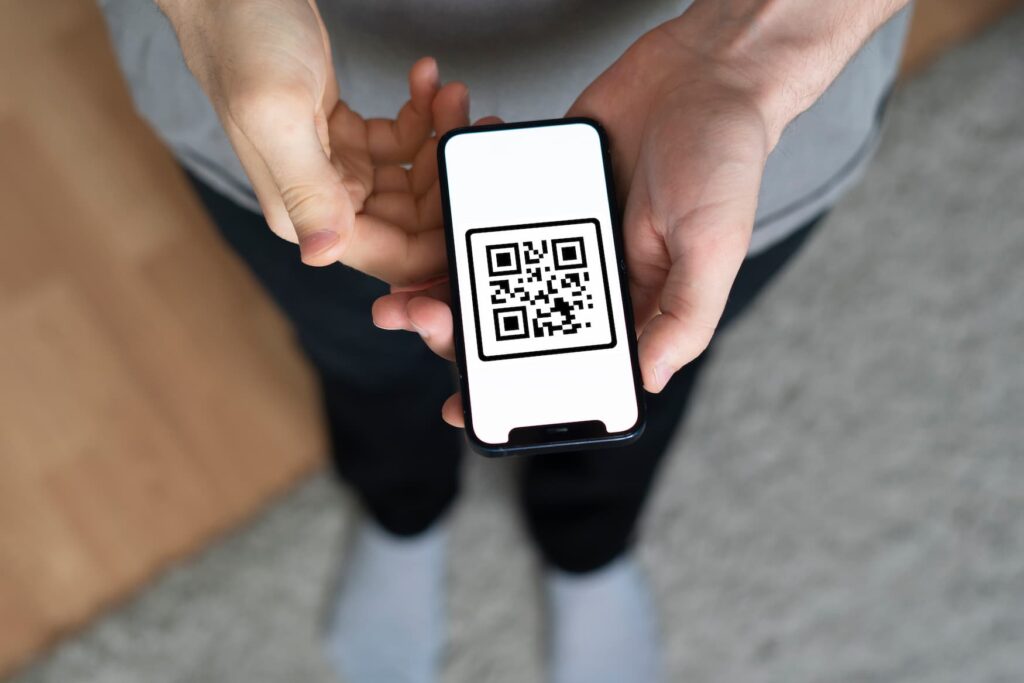
Businesses constantly seek innovative ways to connect with potential customers and streamline their lead-generation processes. One such cutting-edge tool gaining momentum is the QR code.
Originally designed for inventory tracking in manufacturing, QR codes have now transcended their initial purpose, emerging as a powerful asset to boost marketing and drive customer engagement.
In this guide, you will learn the myriad of ways QR code technology can revolutionize your lead generation strategy.
From enhancing your outreach efforts to capturing valuable customer data, you’ll learn practical tips and creative ideas to spice up your campaigns.
Whether you’re a seasoned marketer or a business owner, this guide is your key to unlocking the untapped potential of QR codes. Also, you’ll learn how to quickly create QR codes for lead generation with our QR code generator!
Table of Contents
Advantages of Using QR Codes
Using QR codes for lead generation offers many advantages you can leverage as a marketer —you can set up a whole QR code campaign with dynamic QR codes to increase user engagement and track results.
QR codes provide a quick and effortless way for users to access digital content from physical sources. By scanning a code on a poster, brochure, or product packaging, customers can be instantly directed to websites, landing pages, videos, or other online resources.
Enhanced conversion rates
QR codes can enrich offline materials with interactive elements. For instance, a printed advertisement can lead to a virtual tour, a product demo video, or a downloadable coupon, thereby increasing user engagement for higher conversion.
Data collection and analytics

Businesses can track the usage of QR codes to gather data on user interactions. This includes metrics like scan frequency, time of scan, and location, providing valuable insights into customer behavior and the effectiveness of marketing campaigns.
Cost-effective marketing
QR codes are inexpensive to generate and can be added to any printed material without significant additional costs. This makes them a cost-effective way to enhance traditional marketing efforts with digital features.
Versatility and flexibility
QR codes can be used in various settings and for multiple purposes, such as sharing contact information, providing product details, facilitating event registrations, or directing users to social media pages. Their versatility makes them a valuable tool across different industries and use cases.
Increased accessibility
As a marketer, you always want your prospects to access your content easily. With the widespread use of smartphones, accessing QR codes has become familiar to most consumers. This ensures that a broad audience can interact with your digital content effortlessly.
Dynamic QR Codes vs Static – A Critical Distinction

When it comes to lead generation, understanding the differences between dynamic and static QR codes is crucial, as each type offers distinct advantages and limitations.
Here’s a comparison of dynamic versus static QR codes in the context of lead generation.
Static QR Codes
Static QR codes are a type of QR code where the information encoded is fixed and cannot be changed after the code is generated.
Advantages:
- Straightforward to generate and do not require any ongoing management.
- Many online tools allow you to create static QR codes for free.
- Once generated, do not expire, making them suitable for information that does not change over time.
Limitations:
- The information encoded in a static QR code cannot be changed. A new QR code must be created if the URL or data needs to be updated.
- They cannot provide detailed analytics or be used for advanced tracking.
Dynamic QR Codes
Dynamic QR codes are an advanced type of QR code that offers flexibility, tracking capabilities, and the ability to update the encoded information as often as needed.
Advantages:
- The destination URL or data can be changed without generating a new code. This is particularly useful for campaigns that may evolve or need frequent updates.
- They can be used for various purposes, such as updating promotional offers, changing contact information, or altering links to new landing pages.
- Dynamic QR codes can provide detailed analytics, including the number of scans, the time and location of scans, and the device used. This data is invaluable for measuring the effectiveness of marketing campaigns and understanding customer behavior.
- They can integrate with CRM systems and marketing platforms to automatically capture lead data and streamline follow-up processes.
Limitations:
- Dynamic QR codes often require a subscription to a QR code service provider, which can be more expensive than static codes.
- You rely on the third-party service provider for managing and maintaining the dynamic QR code functionality.
Wrap-Up
Incorporating QR codes to capture leads is an innovative way to lure your prospects, leveraging the attractiveness and usability of QR code tech. With ActivateHere, you can create QR codes for lead generation, virtually of any type. So feel free to start your free trial and capture leads in just a simple scan!